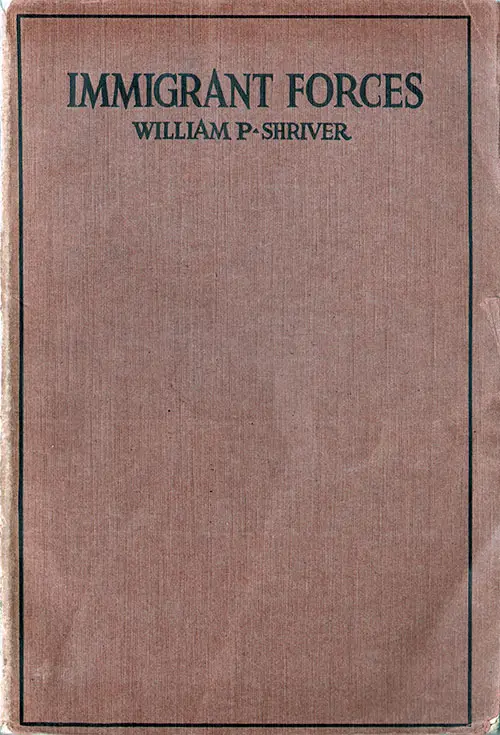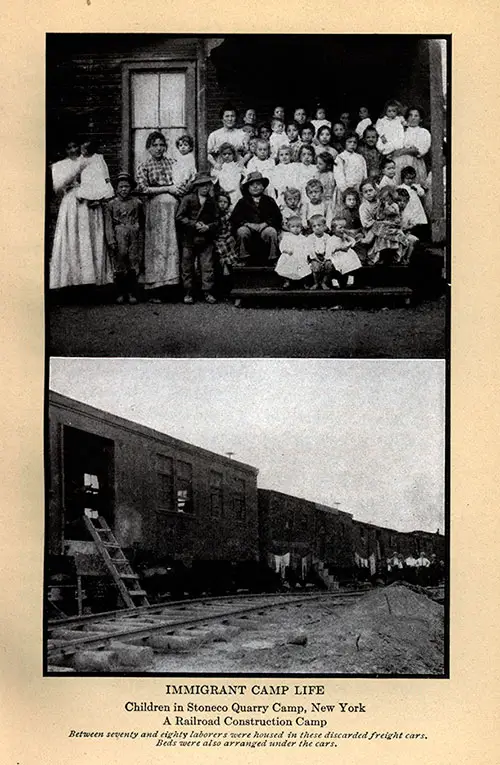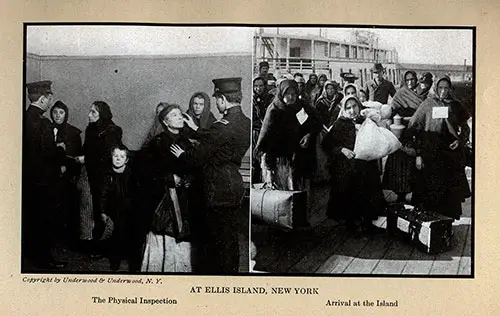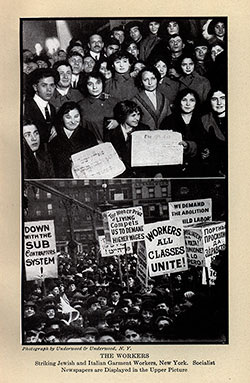Immigrant Forces: Factors in the New Democracy

Immigrant Forces
FACTORS IN THE NEW DEMOCRACY
BY
WILLIAM P. SHRIVER
Copyright, 1913. by MISSIONARY EDUCATION MOVEMENT OF THE UNITED STATES AND CANADA New York
FOREWORD
I wish to acknowledge the inspiration and help I have received in the preparation of this book from my colleagues, the Rev. Kenneth D. Miller, the Rev. Joel B. Hayden and the Rev. Spencer L. Towle, Immigration Fellows in resident study abroad, and from the Rev. Paul Fox and the Rev. Norman M. Thomas. All are young men who are devoting their lives to a ministry among our recent immigrant and industrial communities, a type of minister to whom the Church must increasingly look for guidance as it aims to make its service efficient under these newer and critical conditions.
William P. Shriver.
New York, June 1, 1913.
CONTENTS
- Foreword ix
- I The Lure of American Industry
- II An Immigrant Inventory
- III The New Communities
- IV Perils and Problems
- V New Civic Service
- VI Religious Backgrounds
- VII Task of the Church
- VIII Getting Together
- APPENDIXES
- Appendix A Bibliography
- Appendix B Immigrant Aliens Admitted and Departed, 1908-1912
- Appendix C Immigrant Aliens Departed, 1908-1912
- Appendix D Total Immigrants by Decades
- Appendix E Increase in Foreign-born by Decades
- Appendix F Total Foreign-born in the United States in 1910, by Country of Birth
- Appendix G Distribution of Earlier and Recent Immigration
- Appendix H Wave of Immigration Into the United States from all Countries During the Past Years
- Appendix I Agencies of the Protestant Churches of the United States Working Among Immigrants
- Index
ILLUSTRATIONS
- Immigrant Forces
- At Ellis Island
- Chart, Panics and Immigration
- Map-Chart, Foreign-born Whites and Native Whites of Foreign or Mixed Parentage
- Map, Industrial Zone of United States
- Map-Chart, Percentage of Foreign-born Whites in the Total Population, 1910
- Chart, Foreign-born Population by Principal Countries of Birth, 1910 and 1900
- Chart, Immigration into the United States from Austria-Hungary, 1861-1912
- Map, Austria-Hungary
- Physical Features Map, Austria-Hungary
- A Croatian Zadruga Near Agram
- Map, Principal Races of Austria-Hungary
- Map, Distribution of Slavs and Germans in Europe
- Map, Emigration from Italy to the United States in 1909
- Those That Are Left Behind
- Polish Gardeners on Long Island, New York
- Immigrant Camp Life
- The Workers
- Children of the City Streets
- And They Call Us a Problem
- New Civic Service
- Worshipers by the Wayside
- Polish Catholic Church
- Types of Christian Settlements
- The Church and the Immigrant
- The Gary Chapel and Neighborhood House
- A Croatian Sokol or Gymnastic Society
- Chart, Percentages of News Space in Seventeen New York City Dailies
- Churches in New York City
- Chart, Wave of Immigration into the United States from all Countries during the past 93 years

Immigrant Camp Life. Children in Stoneco Qarry Camp, New York, A Railroad Construction Camp. Between seventy and eighty laborers were housed in these discarded freight cars, beds were also arranged under the cars.

Left: The Physical Inspection at Ellis Island, New York.
Right: Immigrants arriving at Ellis Island, desimbarking from the
Ferry Boat.
Commentaries on the Treatment of Workers

NEW YORK Missionary Education Movement of the United States and Canada
If our industrial structure is to endure, the conditions in it must come to be such as will make our working men and women better, wiser, happier, and stronger through their work. It is a wrong to the community that profit should arise out of continued conditions that injure the workers. But a chasm of sympathy and an equal chasm of knowledge too often separate the workers from the employer; and through this want of knowledge and this lack of sympathy we all suffer.—William C. Redfield.
The welfare, the happiness, the energy and spirit of the men and women who do the daily work in our mines and factories, on our railroads, in our offices and ports of trade, on our farms and on the sea, is the underlying necessity of all prosperity. There can be nothing wholesome unless their life is wholesome; there can be no contentment unless they are contented. Their physical welfare affects the soundness of the whole nation.— Woodrow Wilson.
Unless business men wish to put themselves in the position of being willing to exploit weakness and ignorance for their own gain, it is incumbent on them to conduct their enterprises in such a way that the health, strength, and character of their employees are conserved and not destroyed. They must refuse to employ children even if they are cheap. They must refuse to employ women under unsuitable conditions or in tasks for which they are physically unfit. They must not permit overwork of men or women. They must minimize the risks of dangerous occupations. They must pay living wages. In a word, they must take into account in all their plans the social welfare of their employees, as well as their own financial welfare.—Edward T, Devine.
